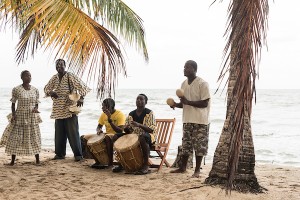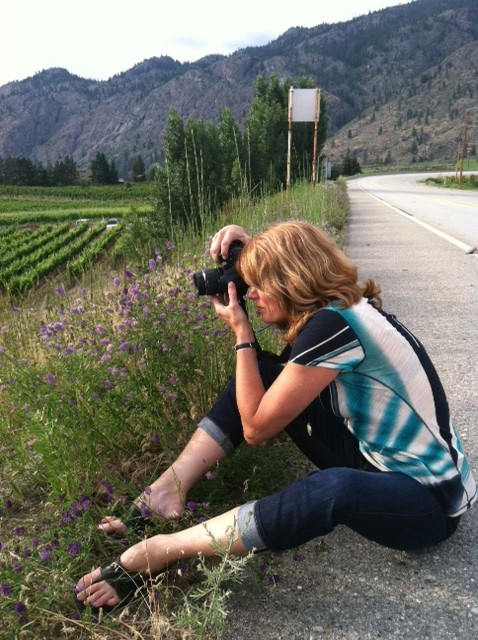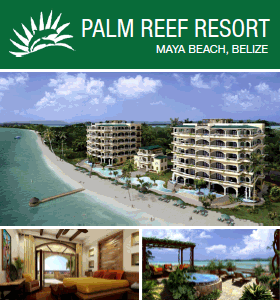Ten things to do in Belize without a Beach Towel
Posted by in UncategorizedArticle appeared in November 2023 on Vacay Network
https://www.vacaynetwork.com/10-things-to-do-in-belize-without-a-beach-towel/
Most tourists go to Belize for the coral reefs, diving, snorkelling and for the beaches. These are great reasons to visit, but there is much more to Belize. The true heart and soul of the country can be found inland and the southernmost districts in particular are the undiscovered gems. Fewer tourists here makes for an authentic experience.
The Toledo District is the most southerly and least populated region in Belize, near the Guatemalan border, with views of Honduras across the sea. It is surrounded by lush rainforest, criss-crossed by meandering rivers and studded with living Mayan villages and several classic Mayan ruin sites, including Lubaantuun, the largest Mayan ceremonial centre in Southern Belize. Explore rainforest grottoes and rivers where iguanas and crabs climb invisibly on tree branches of mangrove, mahogany, palm and Spanish cedar. It’s possible to explore the culture and food of three distinct ethnic groups in one day – the Creole, Maya and Garifuna cultures co-exist peacefully here. The mix of these cultures, with influences from the Caribbean, Mexico, Africa, Guatemala, China and East India, make it the perfect place for a festival.
The town of Punta Gorda is the hub for exploring the Toledo District, with a number of lovely inns and lodges. Nearby Stann Creek District is home to a wildlife sanctuary and a national park and the villages of Placencia and Hopkins provide accommodations for those exploring the area. There are a number of local guides who can provide boats, equipment and even lunch.
Once you’ve tried a few activities on this list, then head to Placencia’s or Hopkin’s beaches for a well-deserved rum punch made with the local One Barrel rum or for a Belikin, the national beer.
Following are 10 things you can do that don’t involve a beach:
Do the Cacao Trail Tour (hint: you must like chocolate) The tradition of chocolate-making in Belize traces its origins back about 1,500 years to the Mayans. Cacaofest is an annual event in the Toledo district which takes place every May and celebrates the Mayan chocolate-making tradition. Cacao beans only grow in the south, which gets the most rainfall. You can do the Cacao Trail Tour any time of the year – visit a Mayan Farm, tour the cacao orchards and crack open a cacao pod to taste the fresh fruit, which is a bit slimy but tasty. The juicier the flesh, the better the fermentation and the higher the cocoa’s quality. Learn about the fermenting and drying process, watch the cacao being roasted and then see how the beans are turned into velvety chocolate.
This year’s Cacaofest was the weekend of May 19 & 20th. Activities included a Cacaopod-breaking ceremony at the Maya House in Mafredi Village, a Chocolate Gala at Copal Tree Lodge (a decadent evening of wine, chocolate, cocktails, capapes and live music), a Cacao & Culture Day in Santa Cruz Village with chocolate-making demonstrations, and cultural activities like the traditional Maya Deer Dancing. Proceeds go to support the Mayan cacao farmers. You can try fresh corn tortillas made on a stone in the traditional Mayan way. Legend has it that tortillas were invented by a Mayan peasant to feed his hungry king and the recorded use of tortillas dates to 10,000 BC. Jipijappa Baskets and beautiful, hand-loomed shoulder bags can be purchased from Mayan women who have woven them in their homes and villages. Participating in these activities can make a real difference to Mayan families who often survive on subsistence farming.
www.chocolatefestivalbelize.com
www.mayabags.org
Visit a Butterfly Farm – geek alert! – learn what makes a butterfly happy (hint: bananas). Marvel at the strenuous journey a caterpillar undergoes to become a butterfly whose life span is only two months. The worker/guides at Ya’axkin Butterfly Farm near the town of Dandriga in Stann Creek show the visitor new eggs on a banana leaf, striped black & yellow caterpillars resting on tree branches, and a hand-made frame created for the bright green pupa (or chrysalis) which looks like abstract art. The reward at the end of the tour is the sanctuary, where hundreds of brightly coloured butterflies fly freely. Photo ops abound for close-ups of the beautiful, fluorescent Blue Morpho and the aptly-named Owl butterflies. The farm is owned by Javier Saqui, a 24-year-old Mayan who just won the 2022 Belize Entrepreneur of the Year Award from the Office of the Prime Minister of Belize.
www.facebook.com/yaaxkinButterflyFarm
Have a Mayan ruin to yourself – (hint: arrive early in the morning or after 3:00 pm). Toledo is an ancient centre of Mayan culture and has the largest concentration of Mayan villages in Belize. The Lubaantuun site is nestled in the foothills of the Maya Mountains of the Toledo District, above a tributary to the Colombia River, where wild coriander grows on the ancient paths that run through the unnamed, overgrown Mayan ruins. Lubaantuun is a Mayan city from the Classic Period (700-900 AD), where the famous Crystal Skull, sought after in the 2008 Indiana Jones movie, Kingdom of Crystal Skull, is said to be from. The Crystal Skull, thought by many to have mythical qualities, was apparently found here in 1924. While you might not run into Harrison Ford playing an archaeologist, you might run into a working archaeologist. Lubaantuun consists of 14 major structures, including two ballcourts, grouped around 5 main plazas and was built with large stone blocks laid with no mortar.
Nearby and easily done in the same day, is Nim Li Punit, another ruin site from the Classic Period, where the Giant Stone Heads, which represent ancient kings, can be viewed. Also in the area is Uxbenka, really off the beaten path, as it isn’t yet an official tourist destination. It can be reached through the village of Santa Cruz and is a bit of a thrill for those who’d like to see an ancient city in its “raw” state. See how the Mayans used terracing to tame the jungle. Be your own guide or ask villagers for directions, which can be part of the fun. Uxbenka was an important ceremonial centre when nearby city states, like Nim Li Punit, Lubaantuun, Caracol (in Cayo District) and Xunantunich (also in Cayo) battled for domination with Tikal in Guatemala.
Tour a Spice Farm – (hint: bring a camera) See and smell a dazzling number of spice trees and flowers at the Belize Spice Farm and Botanical Gardens in Toledo. Pick nutmeg, coconut, limes and vanilla bean right off the tree. Photographers can take close-up photos of stunning flowers including the Black Orchid, the national flower of Belize and the dramatic & colourful Bird of Paradise. The tour is on a comfortable, tractor-towed wagon-mobile driven by a knowledgeable and friendly Mayan guide. He takes you off-road through the rainforest on narrow trails with overhanging bougainvillea, stopping to point out the spices and flowers along the way. The large restaurant can accommodate crowds and the store sells fresh spices to take home. The Spice Farm is building a lodge on its property which is scheduled to open this year – imagine waking up to the fragrant scent of rainforest flowers and spices and the sounds of macaw and toucan birds.
www.belizespicefarm.com
Do a Cultural Tour – Visit a Garifuna village in Toledo or Stann Creek – (hint: bring a sense of rhythm.) Experience their unique style of drumming and learn about the rich history of the Garifuna people (Garinagu) and also about the traditional drumbeats and dances that influence music throughout Belize and Central America. The Garifuna people are of mixed free African and indigenous American ancestry who originated in the Caribbean island of Saint Vincent. They were exiled to the Honduran coast in the eighteenth century after a rebellion on the island and they subsequently migrated to Belize and also the coasts of Nicaragua and Guatemala. They speak Garifuna, an Arawakan language, and Vincentian Creole. Today, their language is a mix of Arawak, English, Spanish, French and west African languages.
Every year on Nov. 19th, a festival and public holiday called Garifuna Settlement Day, celebrates the arrival of the Garinagu in Belize, with drumming and dancing starting the night before and running into the early morning, when they re-enact the arrival of their ancestors in small paddled boats. This is a time of feasting on traditional Garifuna foods like cassava bread (ereba), conch soup, hudut (a coconut stew with fish and plantains) and dares (banana tamales). The major festivities are in the town of Dandriga and also in and around Punta Gorda, with parades, street music and traditional dancing. The drumming can often be heard throughout the year in the town of Santa Cruz, in Toledo and also in Dandriga and Hopkins in Stann Creek District.
Dine (or stay) at a luxury eco lodge. (Hint: Bring an appetite) Watch the sun set through the rainforest canopy from the attractive verandah of the Garden Table Restaurant at Copal Tree Lodge in Toledo, while sipping wine and eating a dinner made with rainforest herbs, spices and fruits from the property, finishing the meal with the house-roasted coffee. Copal Tree Lodge is surrounded by 12,000 acres of rainforest preserve in the Maya mountains. The lodge’s farm supplies most of the food served at the restaurant. You may be thinking “Farm to Table”, or “Bean to Bar”, which it is, but with the recent introduction of a rum distillery on the property, it is in fact “Farm to Flask” as well. After dark, howler monkeys can often be heard in the distance. The lodge offers on-site adventures including hiking in the Maya mountains, kayaking the Rio Grande, horseback riding, chocolate-making classes, coffee cupping, cocktail mixology classes with Copalli Rum and tours of the Jungle Farm. www.copaltreelodge.com
Go on a Jungle Cave Tour. (Hint: bring your own shaman) Near San Antonio Village, the Toledo Cave System was formed two hundred million years ago by seeping rainwater which carved caves (actuns) from the rock. In ancient Maya culture, these mineral caves served as portals between the surface world of the humans and the underworld of the gods, called Xibalba. Echoes bouncing off the cave walls can play with your sense of time and space. Thousand-year-old artifacts of Maya shamans can still be found in some of the caves. Cool breezes from deep in the earth suggest the presence of ghosts.The caves have wonderful rock formations and a rich variety of ferns, heliconia flowers and huge, shade-loving palms which flourish under the tall tree canopy.
Kayak on a Rainforest River – (Hint: Be prepared to get a bit wet!) Tours are available in Toledo on the Rio Grande and also the Moho River. The Moho is a slow, meandering river in southern Belize that meets the Caribbean south of the town of Punta Gorda. The river is remarkably warm, owing to underwater heat vents along its course. Its relaxed pace means that after putting in, paddlers can follow the river in either direction, though generally starting by heading upstream makes the return trip easier. This is a true jungle experience and some of the tours combine guided paddles with hikes. Those looking to swim can find a spot on the banks to pull over and experience the warm waters of the Moho.
Visit a Waterfall – (hint: bring a bathing suit) Escape the heat and go for a hike on a trail that follows the Rio Blanco river in the Rio Blanco Nature Reserve in Toledo. The river flows through wide, shallow pools before cascading over a 15-foot drop. Explore the park with a local guide and then chill out on your own, swimming in the pools. You can often see hummingbirds and dragonflies bathing in the spray of the water.
Go birdwatching – (hint: bring your binoculars! ) Toledo is the southernmost district in Belize and receives the most rainfall. This makes the rainforest lusher and the moisture from the Caribbean Sea enhances this. This district has bird habitats from the coastal marshes to the ridge tops of the Maya Mountains. Think Mangrove/Littoral Forest, Wetland, Lowland Pine Savannah, Broadleaf and Submontane Wet Forest. You can choose a 2-3 hour early morning trek close to the town of Punta Gorda, or a full-day outing, visiting numerous watering holes, nature reserves and other bird-friendly spots.
If you go:
Tours can be easily set up with local tour companies such as Toledo Cave and Adventure Tours (https://m.facebook.com/ToledoCaveandAdventureTours) with Bruno Kuppinger, Owner/Operator or withPG Tours www.pgtoursbelize.com with Jo Audinett, Owner/Operator. Cotton Tree Lodge www.cottontreelodge.com and Copal Tree Lodge www.copaltreelodge.com
also set up tours for guests.
Accommodations:
Coral House Inn, Punta Gorda
https://www.coralhouseinn.com
Blue Belize Inn, Punta Gorda
https://www.bluebelize.com/guesthouse/
Copal Tree Lodge, Punta Gorda
https://www.copaltreelodge.com
Cotton Tree Lodge, Punta Gorda
https://cottontreelodge.com
Hickatee Cottages, Punta Gorda
https://www.hickatee.com
Maya Beach Inn, Placencia
https://www.mayabeachhotel.com
Ceiba Resort Hotel, Placencia
https://ceibabeachresort.com
You can follow any responses to this entry through the RSS 2.0 Both comments and pings are currently closed.



